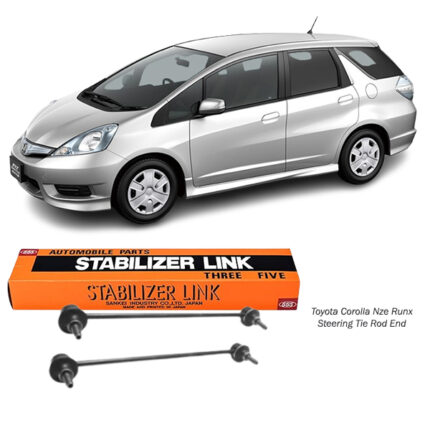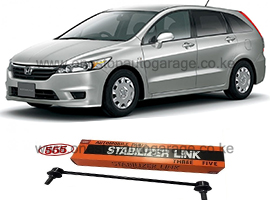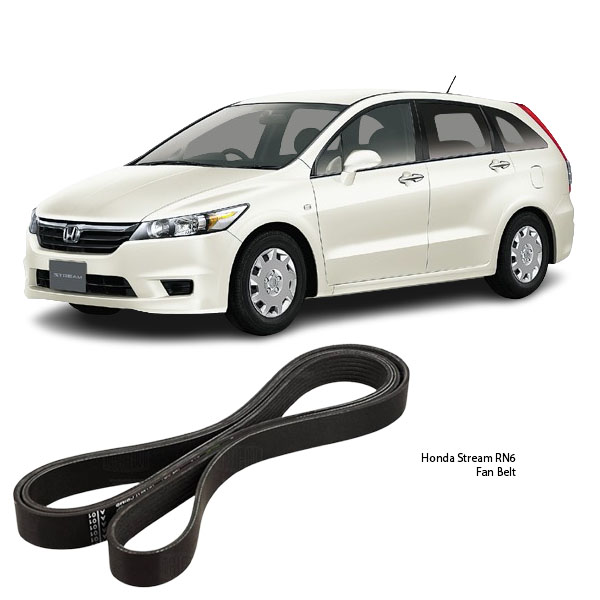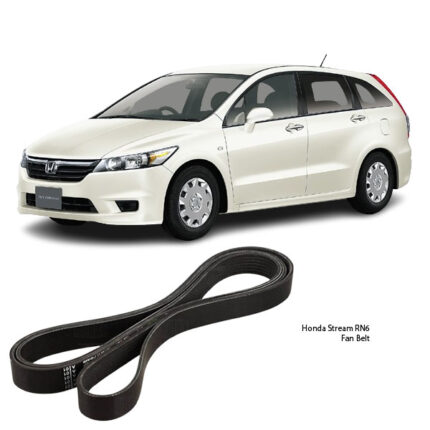Get Honda Stream RN6 Fan Belt 7PK2061 in Kenya
A fan belt, commonly known today as a serpentine belt or drive belt, is a vital component of the engine system that transmits power from the crankshaft to various engine accessories. These accessories may include the alternator, power steering pump, air conditioning compressor, water pump, and cooling fan. Without a properly functioning fan belt, these critical systems would fail, leading to engine overheating, battery drainage, steering difficulties, or complete engine shutdown.
What Is a Fan Belt?
Traditionally, the fan belt was a single-purpose belt that drove the engine’s cooling fan. Over time, automotive engineering evolved, and manufacturers began using multi-ribbed serpentine belts to drive multiple components simultaneously. Despite the technological advancement, the name “fan belt” is still commonly used to refer to these belts, especially in casual or traditional contexts.
Made from reinforced rubber with embedded fibers or cords (often polyester or aramid), the fan belt is designed to withstand heat, friction, and tension while maintaining flexibility and strength during high-speed engine operation.
Function of a Fan Belt
The main function of a fan belt is power transmission. It links the engine’s rotating crankshaft pulley to other pulleys connected to auxiliary systems. As the crankshaft turns, the belt rotates and transfers mechanical power to run the following:
-
Alternator – Charges the battery and powers electrical components.
-
Water Pump – Circulates coolant through the engine and radiator.
-
Power Steering Pump – Provides hydraulic assistance for easier steering.
-
Air Conditioning Compressor – Enables the car’s AC system.
-
Cooling Fan (in older or non-electric fan systems) – Helps cool the radiator.
Advantages of a Good Fan Belt
-
Efficient Power Distribution
A well-maintained fan belt ensures that all engine-driven accessories receive adequate mechanical energy, enabling smooth engine operation and consistent accessory performance. -
Low Maintenance with Long Life
Modern serpentine belts are built to last between 60,000 to 100,000 kilometers, offering durable and low-maintenance performance. -
Compact and Streamlined Engine Design
Replacing multiple V-belts with a single serpentine belt reduces complexity, engine weight, and space requirements under the hood. -
Improved Engine Efficiency
With minimal energy loss through slippage or friction, high-quality fan belts enhance the engine’s overall efficiency. -
Quieter Operation
Good belts operate silently and smoothly without squeaking or chirping noises, improving the driving experience.
Disadvantages of a Poor-Quality or Worn-Out Fan Belt
-
Accessory Failure
If the belt fails or slips, essential components like the alternator or water pump may stop working, leading to battery failure or engine overheating. -
No Redundancy
In modern systems where one belt drives multiple components, a single failure can cripple multiple systems simultaneously. -
Engine Overheating
Since the fan belt often powers the water pump and radiator fan, a damaged belt can cause rapid overheating. -
Power Steering Loss
Sudden loss of belt-driven power steering assist makes the steering wheel extremely hard to turn, especially at low speeds. -
Increased Repair Costs
Ignoring belt wear can lead to severe damage of the belt-driven accessories or even engine components, resulting in higher repair costs.
Signs of a Failing or Worn Fan Belt
-
Squealing or Chirping Noises
A high-pitched squeal when starting the engine or during acceleration often points to a slipping or misaligned belt. -
Cracks or Fraying
Visible signs of cracking, fraying edges, or shiny spots on the belt indicate wear and potential failure. -
Loss of Power Accessories
If the battery light turns on or power steering becomes stiff, it could signal the belt has slipped off or failed. -
Overheating Engine
If the engine temperature climbs rapidly, it may be due to a non-functional water pump caused by a broken fan belt. -
Unusual Belt Movement
A belt that looks wobbly or moves irregularly when the engine runs could indicate misalignment or a worn tensioner.
How to Replace a Fan Belt
Replacing a fan belt is generally straightforward but requires careful attention to alignment and tension. Here’s a basic step-by-step guide:
Tools Required:
-
Wrench or ratchet set
-
Belt diagram (usually found in the engine bay or owner’s manual)
-
New fan belt
-
Gloves and flashlight (optional)
Steps:
-
Turn Off Engine and Let It Cool
Never work on the belt while the engine is hot or running. -
Locate the Belt Routing Diagram
Refer to the vehicle’s belt routing diagram to understand how the belt winds through the pulleys. -
Release Tension on the Belt
Use a wrench or socket on the tensioner pulley to release tension. Rotate it to relieve the pressure and slide off the belt. -
Remove the Old Belt
Carefully take the belt off all the pulleys and inspect it for cracks, glazing, or fraying. -
Install the New Belt
Route the new belt through the pulleys, following the diagram precisely. Make sure the belt sits perfectly in the grooves. -
Reapply Tension
Slowly release the tensioner to apply tension to the new belt. Double-check alignment on all pulleys. -
Test the Installation
Start the engine and observe the belt’s operation. It should run smoothly with no noise or wobble.
Maintenance Tips
-
Inspect Regularly: Check the belt every 10,000 km or during routine servicing. Look for cracks, shine (glazing), or signs of wear.
-
Listen for Noises: Unusual squeals often signal slipping or tension issues.
-
Replace When Needed: Don’t wait for a belt to break. Follow manufacturer recommendations—usually around 60,000 to 100,000 km.
-
Check Tensioner and Pulleys: When replacing the belt, inspect the tensioner and idler pulleys for wear or failure.
-
Avoid Contaminants: Keep oil, coolant, and other fluids away from the belt, as these can cause slippage and degradation.
Follow us on Facebook for more parts.




